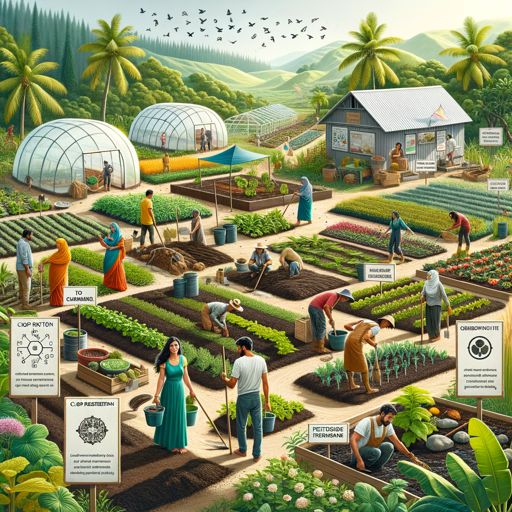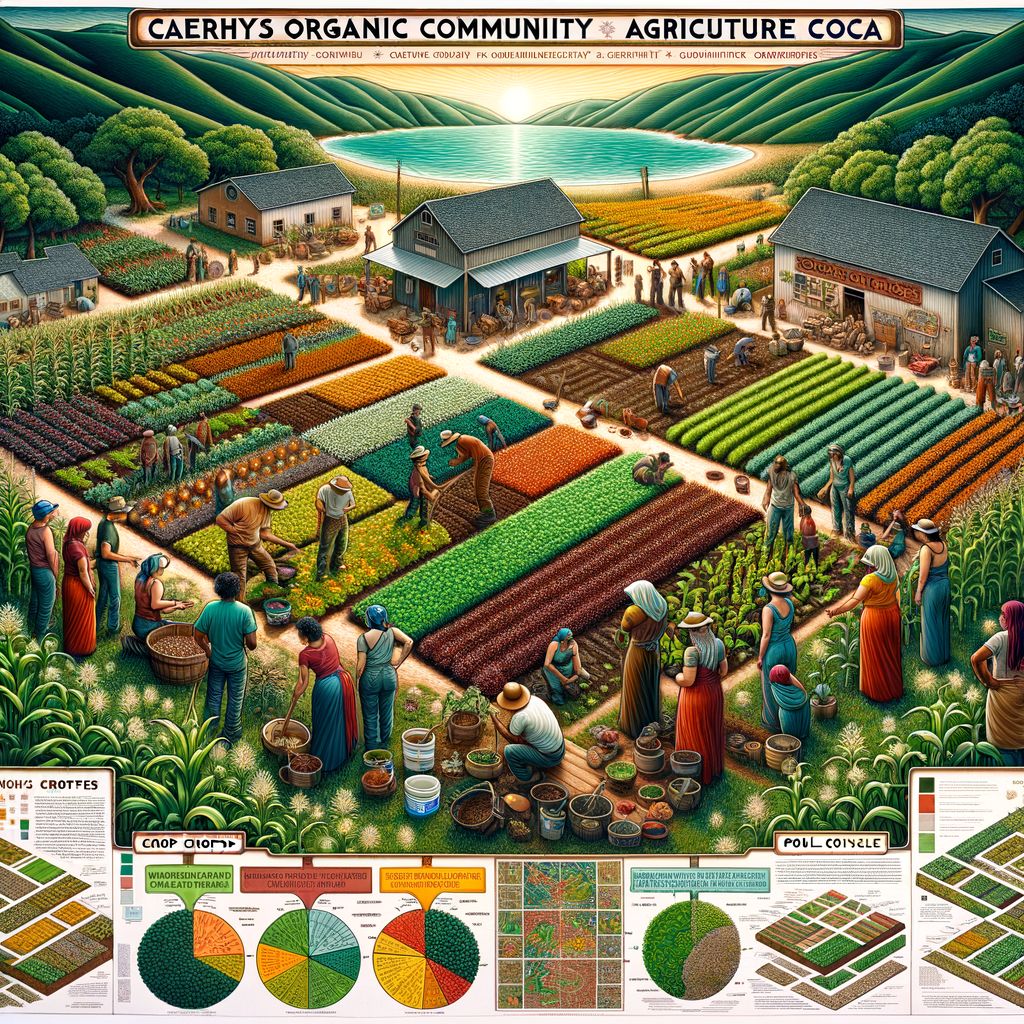Become a Member
Join today and start getting your weekly share of vegetables-
Recent Posts
- Burns Night Supper and Ceilidh, Feb 3rd.
- Xmas double harvest this Friday!
- Carrot Ragout recipe
- Fantastic French Beans
Sign up for information about COCA
Follow Us!
Caerhys Organic Community Agriculture COCA
Practical regenerative farming at Caerhys, Wales, organised by local growers under the COCA cooperative model. Core focus is resilient food production, soil repair and community food sovereignty across smallholdings and shared land.
About COCA and Caerhys Organic Community Agriculture
COCA is a community-led cooperative delivering organic production, training and markets for Caerhys and surrounding Pembrokeshire and Carmarthenshire catchments. Activities include coordinated crop planning, shared composting hubs, pollinator habitat creation and a community supported agriculture model serving nearby towns. Operations align with UK organic standards and seek certification through the Soil Association when appropriate.
COCA's mission and sustainability goals
The mission is to supply nutritious local food while rebuilding soil and habitats. Measured targets include increasing soil organic matter across participating plots, reducing synthetic fertilizer use to zero across certified parcels and expanding membership to local households through a CSA model. Goals are compatible with the Welsh Government sustainable farming transition and the UK net zero by 2050 target, with a five year roadmap for scaling and measurable indicators for soil carbon and biodiversity.
Core principles guiding COCA's farming practices

- Prioritise soil life and biological fertility through cover crops and compost.
- Maximise diversity in time and space using polyculture rotations.
- Conserve water and reduce fossil fuel reliance through efficient systems.
- Build local markets and fair labor systems that share benefits.
- Use monitoring to adapt practices with transparent records.
Soil Health and Regenerative Approaches
Soil repair is the operational backbone. Practices combine cover cropping, reduced cultivation, compost application and systematic soil testing. Emphasis is placed on building aggregate stability, increasing earthworm populations and boosting topsoil carbon.
The following outlines common cover crop options, recommended sowing windows for west Wales, primary benefits and practical seeding rates to implement across mixed smallholdings.
| Species and mix | Sowing window (Wales) | Primary benefits | Typical biomass (t/ha) | Seeding rate (kg/ha) |
|---|---|---|---|---|
| Winter rye | Aug–Oct | Fast cover, erosion control, high biomass | 4–8 | 60–120 |
| Phacelia | Aug–Sep / Mar–Apr | Pollinator nectar, mycorrhizal support | 2–4 | 6–10 |
| Crimson clover | Sep / Mar | Nitrogen fixation, spring feed | 1–3 | 20–30 |
| Oilseed radish | Aug–Sep | Bio-drilling, compaction relief | 1.5–3 | 8–12 |
| Multi-species mix (pulse, grass, brassica) | Aug–Sep | Soil structure, pest suppression, fertility | 3–6 | 40–80 |
| Spring buckwheat | Apr–Jun | Quick biomass, weed suppression | 1–2.5 | 40–60 |
| Legume-only cover | Sep or Mar | Strong nitrogen provision | 1.5–3 | 30–50 |
No-till and low-disturbance techniques reduce oxidation of soil carbon and preserve fungal networks. Where mechanical reduction is not feasible, shallow tine work combined with cover cropping can maintain structure. Regular testing with laboratory assays and on-farm slug and earthworm counts informs nutrient balancing and compost recommendations. Compost inputs are calibrated to close carbon to nitrogen ratios that support microbial activity without causing nutrient leaching.
Crop Planning and Polyculture Systems

Rotation planning uses 4 to 8 year cycles mixing cereals, legumes, brassicas and veg beds to break pest cycles and balance nutrient flows. Intercropping combines cereal strips with legumes to maintain continuous living roots. Perennial integration includes fruit trees and nut hedgerows that sequester carbon while providing habitat. Agroforestry plots follow alley cropping layouts to combine income streams and microclimate benefits.
Composting and Nutrient Cycling
On-farm compost systems include static aerated bays, windrows and worm towers to process green waste, crop residues and livestock manure. Worm-based systems accelerate conversion and produce a nutrient dense cast. COCA uses green manures and fermented plant extracts in rotation to support microbial diversity and reduce external inputs.
Water Management and Conservation
Rainwater harvesting captures roof and yard runoff into lined tanks sized for dry months. Drip and micro-sprinkler systems reduce evaporation losses and allow targeted watering to transplants. Soil moisture sensors and simple tensiometers guide irrigation scheduling and reduce overwatering.
Biodiversity, Habitat and Pollinator Support
Hedgerows, field margins and buffer strips are planted with native species like hawthorn, blackthorn and meadowsweet to create corridors. Pollinator support includes phacelia strips, bee paddocks and small apiaries managed according to local best practice. Habitat monitoring records increases in pollinator and bird presence year on year.
Integrated Pest and Disease Management
Cultural practices such as sanitation, delayed sowing and crop diversity reduce initial pressure. Beneficial predators and parasitoids are supported by non-chemical habitats. Organic approved treatments such as soap-based sprays, Bacillus thuringiensis for specific pests and approved copper products are used sparingly and recorded.
Seed Saving and Genetic Diversity
On-farm seed selection focuses on local adaptation. Heirloom vegetable varieties are conserved in community seed stores with moisture controlled units and clear provenance records. Seed exchanges among growers maintain resilience and genetic options for changing climate.
Energy Use, Renewables and Low-Carbon Practices
Small solar installations power cold stores and pumps. Some sites trial small wind turbines and woodchip boilers for heat. Machinery choices favour low weight implements and efficient diesel alternatives to reduce fuel use. Carbon sequestration is pursued through perennial plantings and improved soil carbon via increased organic matter.
Community Engagement and Labor Practices
Cooperative governance uses participatory decision-making with elected coordinators and transparent accounts. Training programs run seasonally in partnership with Farming Connect and local universities. Apprenticeships offer hands-on experience, while pay and scheduling aim for fairness and inclusion.
Market Access, CSA and Local Food Systems
COCA operates weekly farmers markets and a CSA subscription model serving up to several hundred households in peak growth phases. Value-adding includes preserved goods, small-batch pickles and frozen veg packs to smooth income across seasons.
Monitoring, Research and the Future
Certification adheres to Soil Association standards for parcels seeking organic status. Soil carbon is tracked using repeated soil organic carbon sampling protocols. Farm management software documents operations, inputs and yields. Partnerships with Aberystwyth University and Natural Resources Wales support trials on cover crop mixes, pest thresholds and carbon measurement. Practical training, volunteer placements and membership options provide pathways for community involvement and replication across small farms and gardens.
